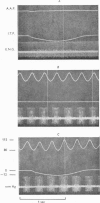Abstract
1. The isolated aortic arch was perfused by a method enabling the mean pressure, pulse pressure and pulse frequency to be varied independently. The preparation was also subjected to phasic and non-phasic changes of extramural pressure.
2. The aortic arch baroreceptor impulse activity in single or few-fibre preparations was increased by raising the intra-aortic pressure and by applying a negative extramural pressure at constant intra-aortic pressure.
3. Curves relating impulse frequency and negative extramural pressure were similar to those relating impulse frequency to intra-aortic pressure. The effective stimulus to the aortic arch baroreceptors is the transmural pressure resulting from the algebraic difference of the intra-aortic and extramural pressures.
4. Rhythmical alterations in extramural pressure caused phasic changes in baroreceptor impulse activity. As the pressure became more negative, the impulse frequency increased and other baroreceptors were recruited.
5. During pulsatile perfusion of the aortic arch the maximum impulse activity occurred when the negative phase of extramural pressure coincided with the systolic phase of the perfusion pressure.
6. These findings are discussed in relation to the effects of changes of intrathoracic pressure on aortic baroreceptor activity in vivo
Full text
PDF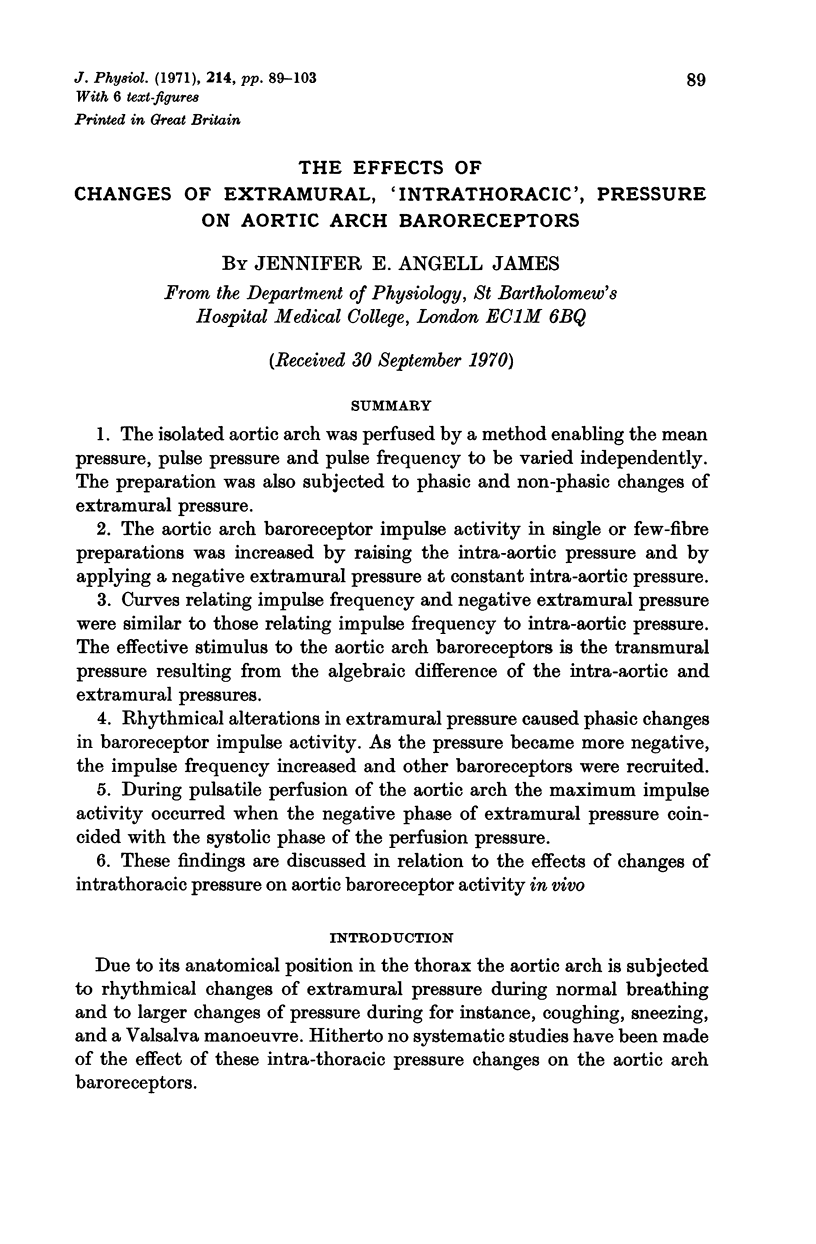
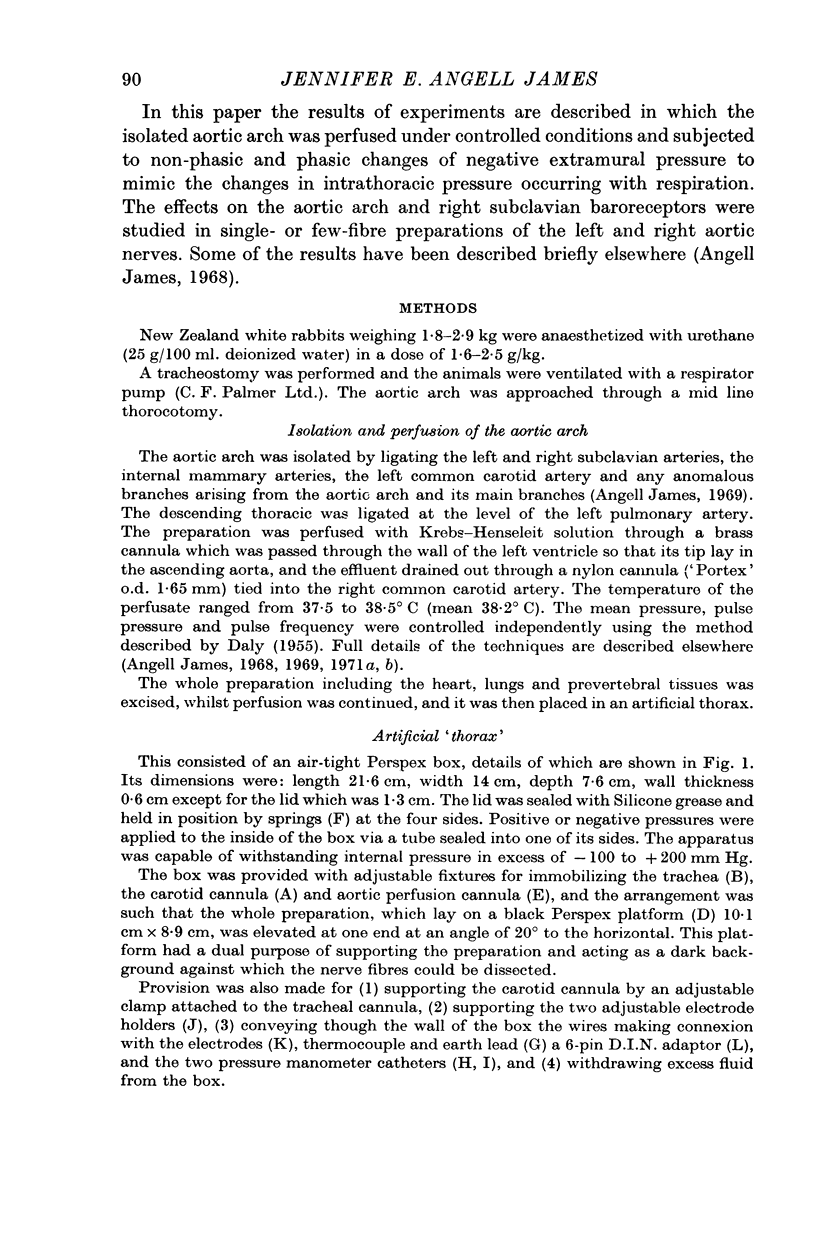
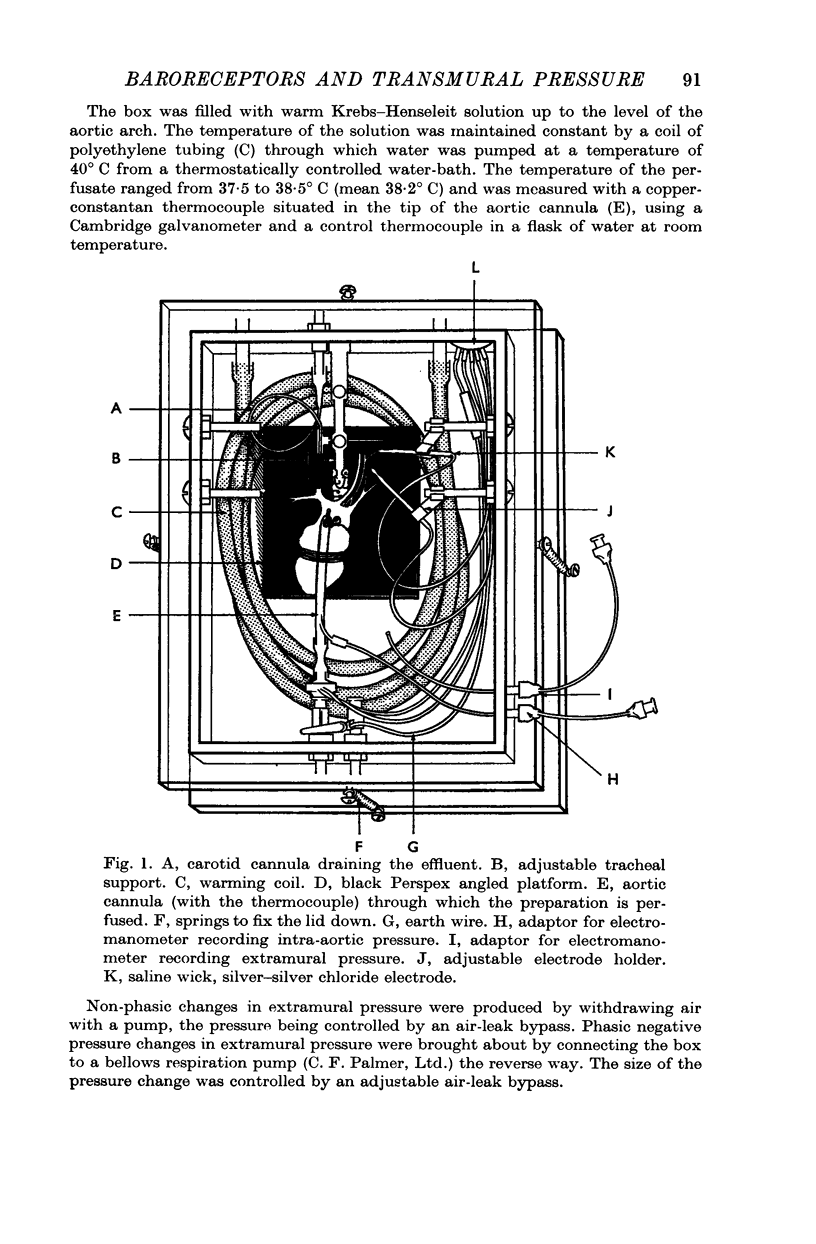
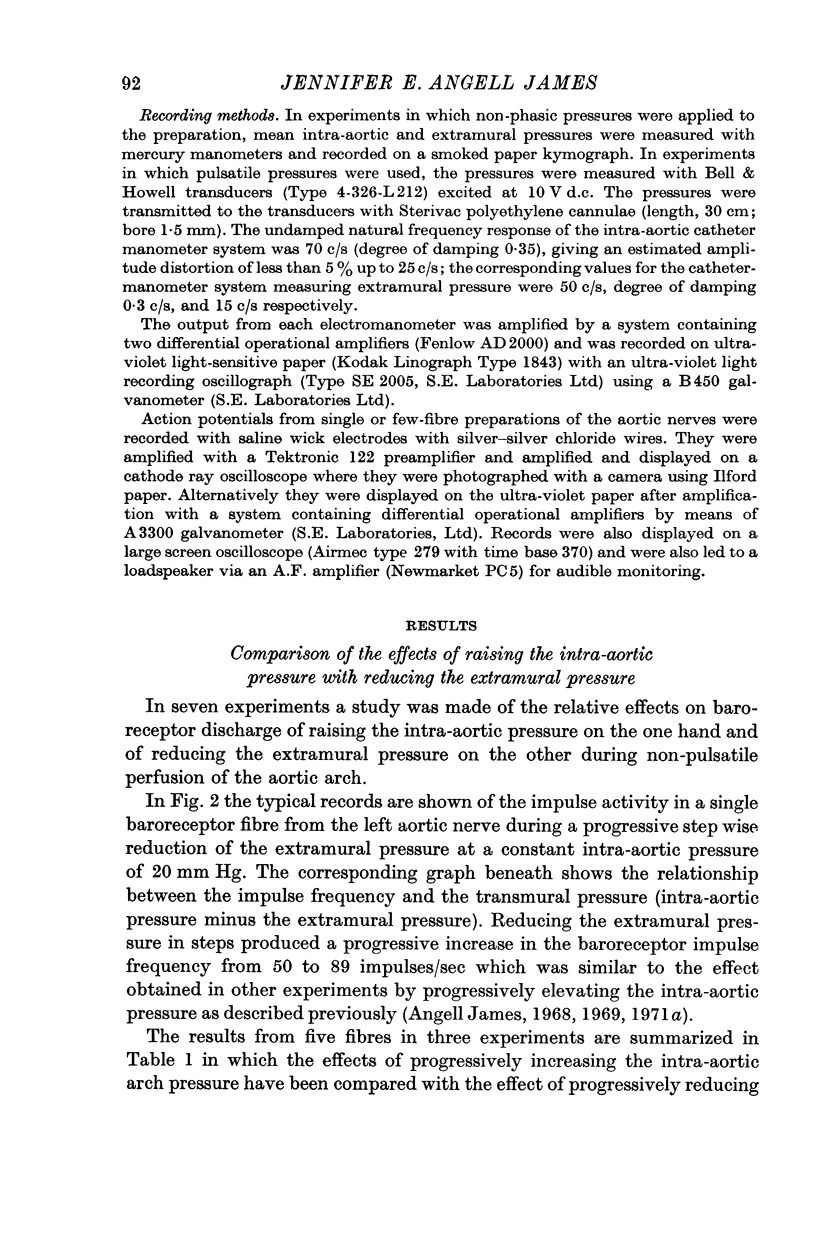
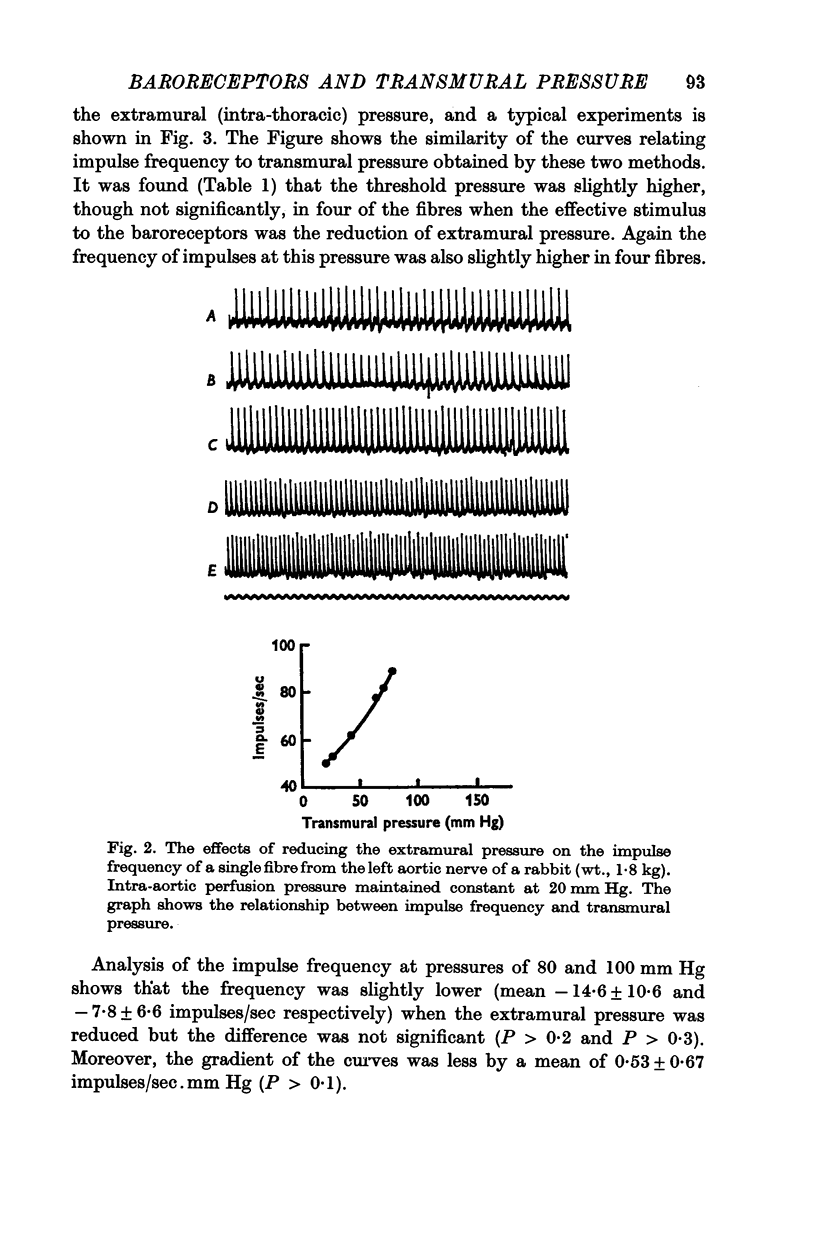
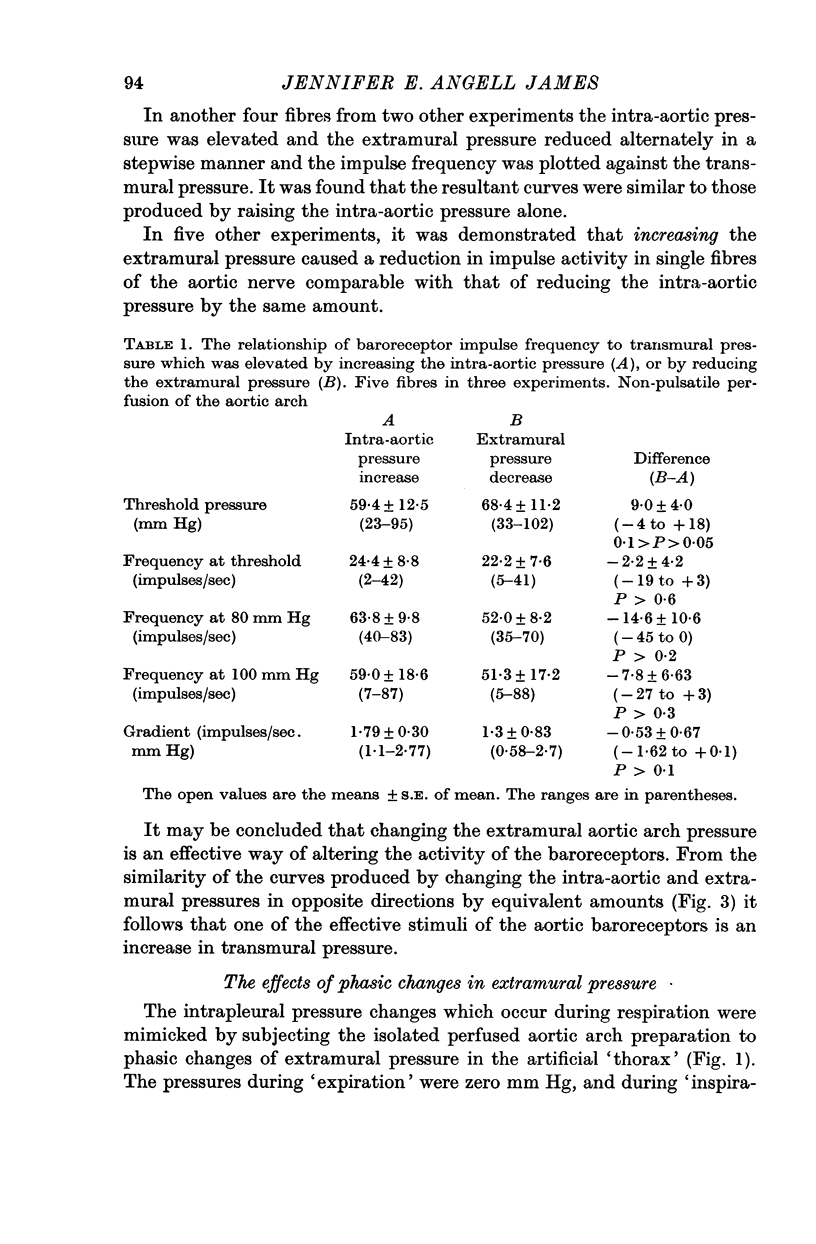
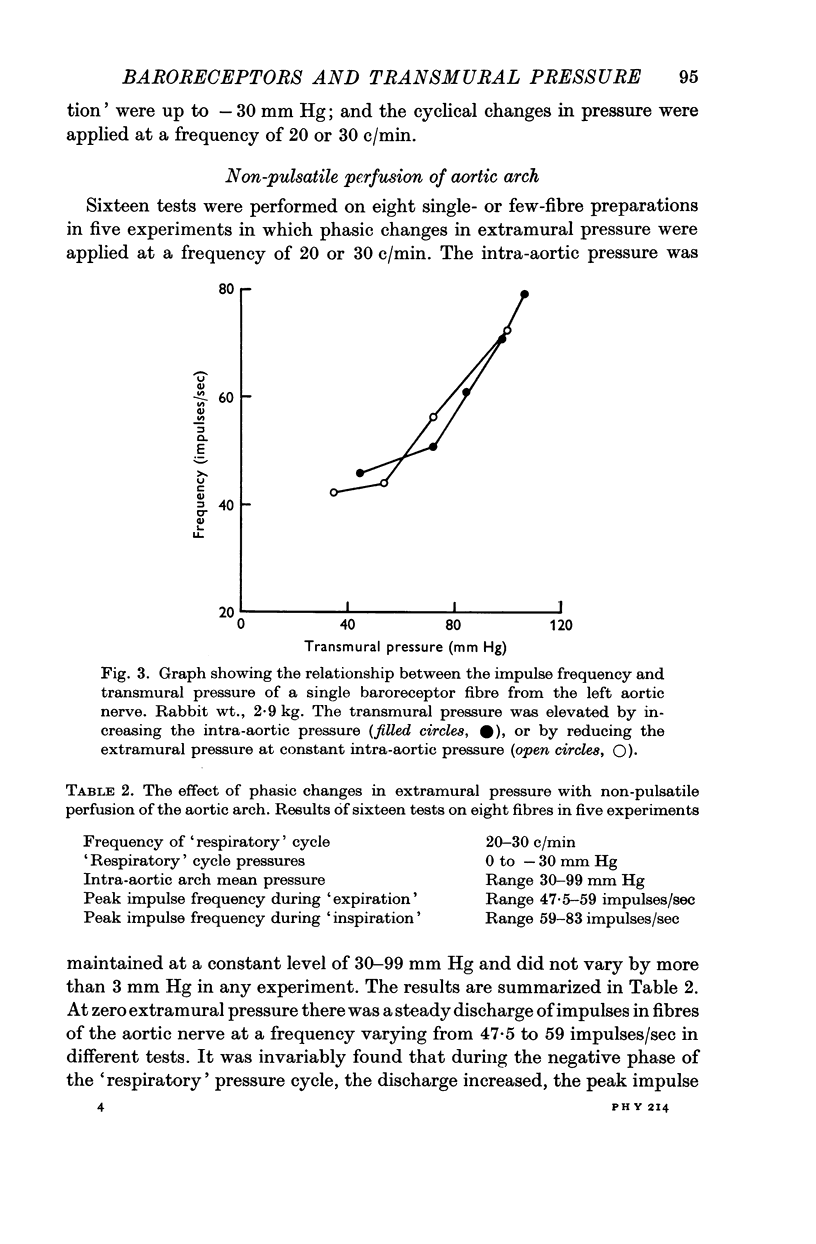
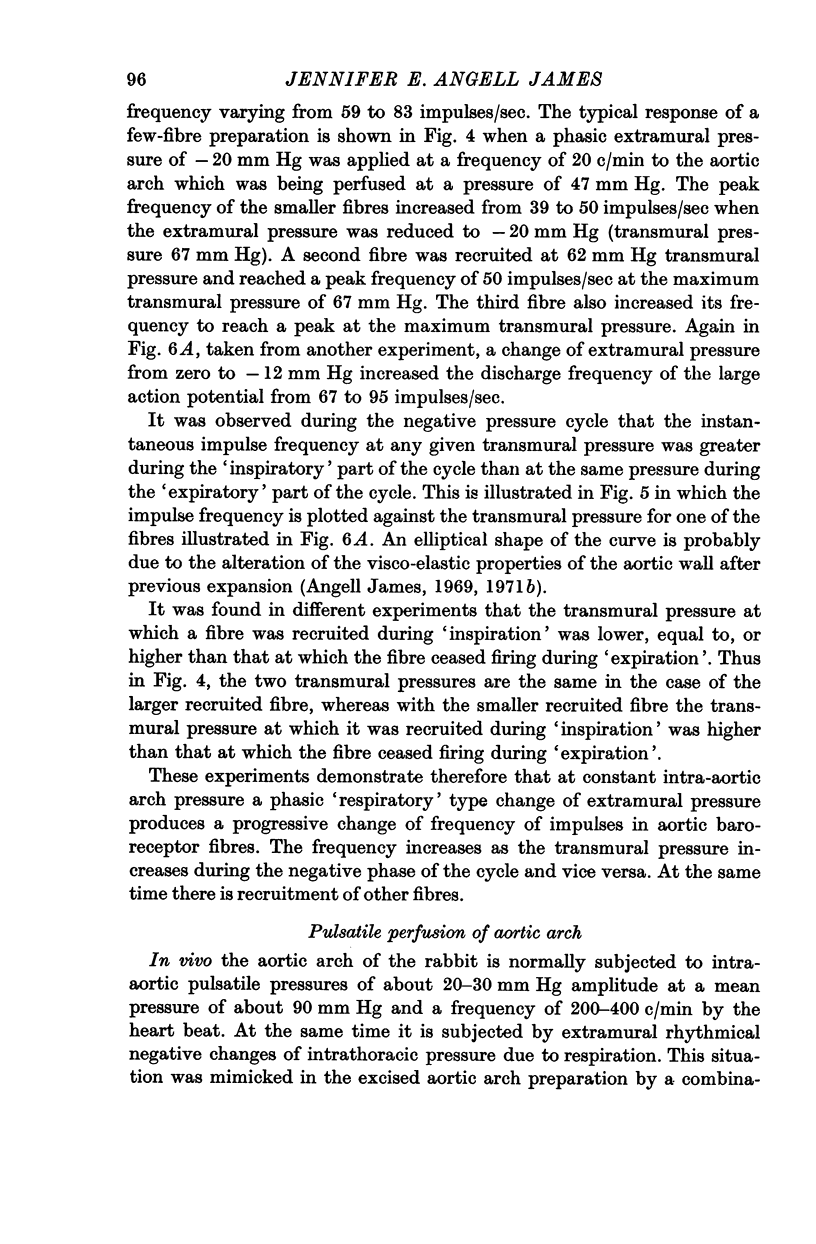
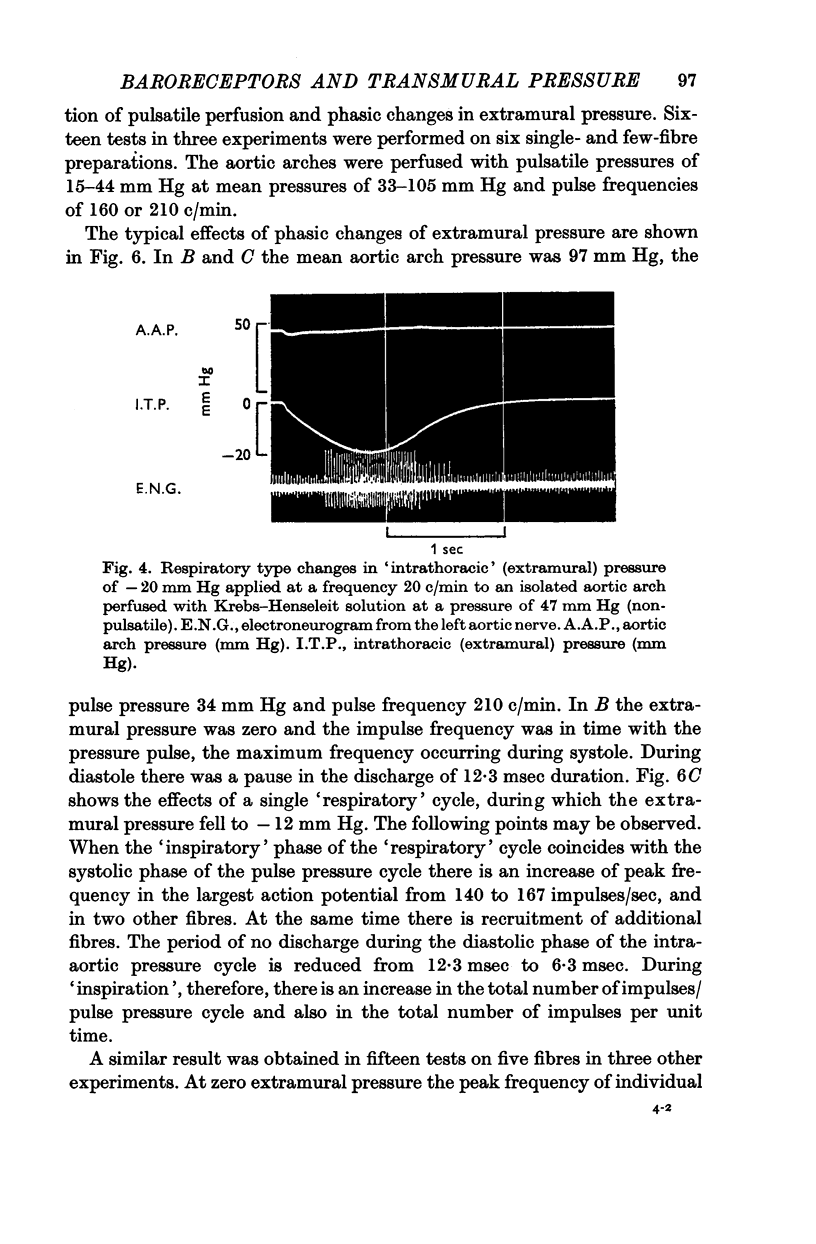

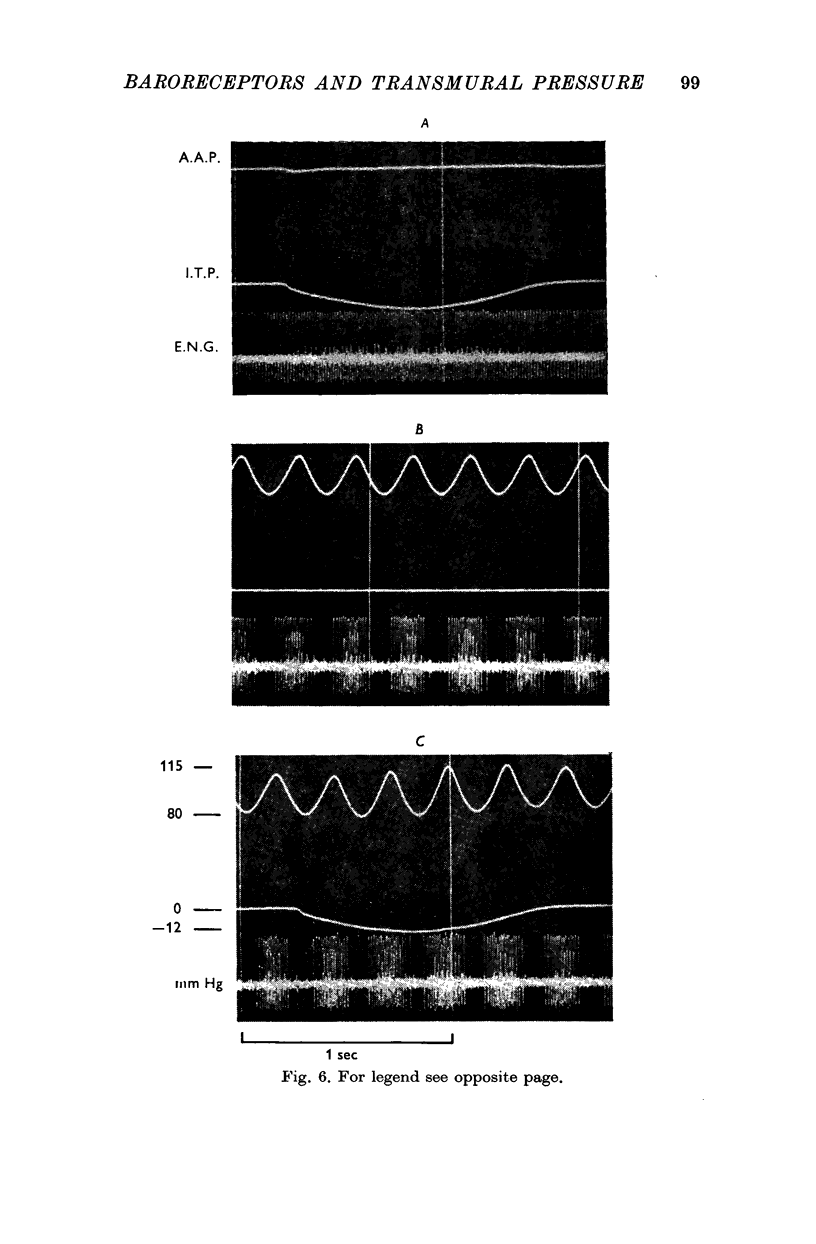
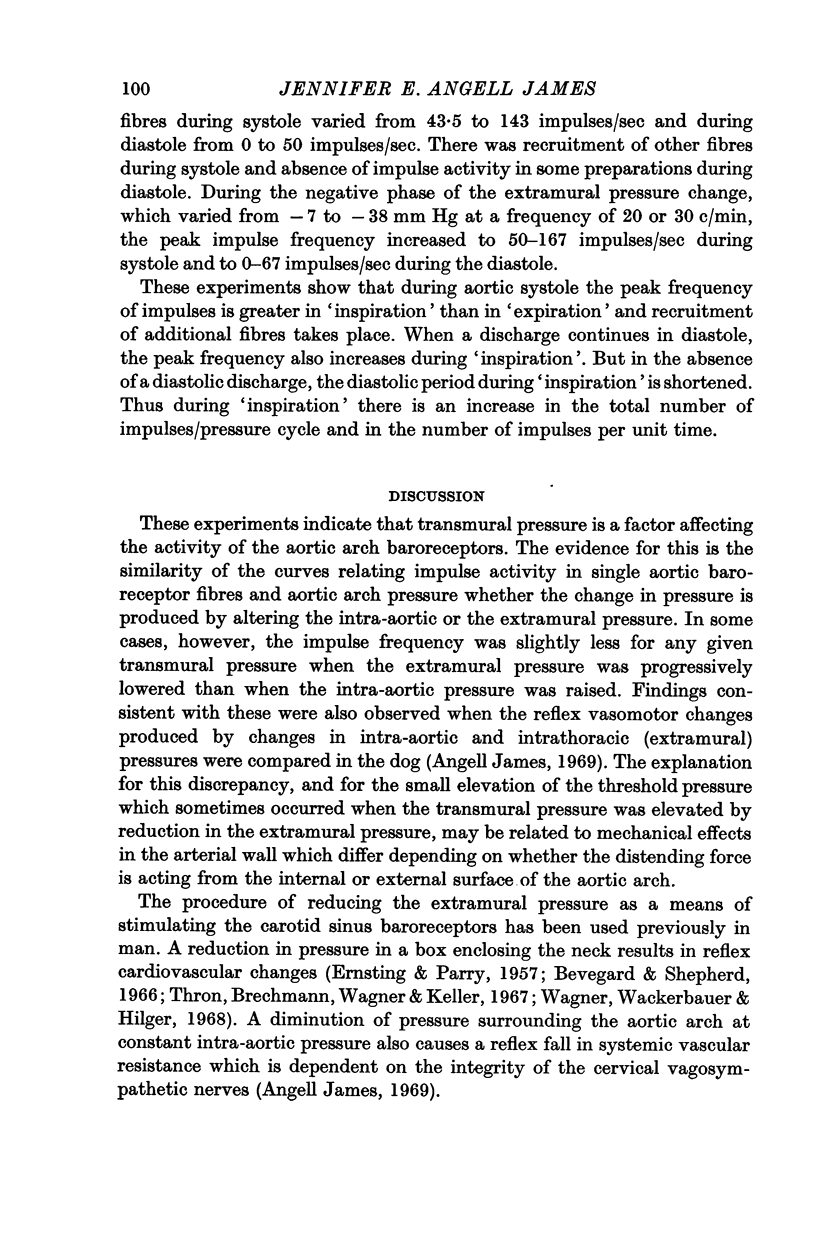
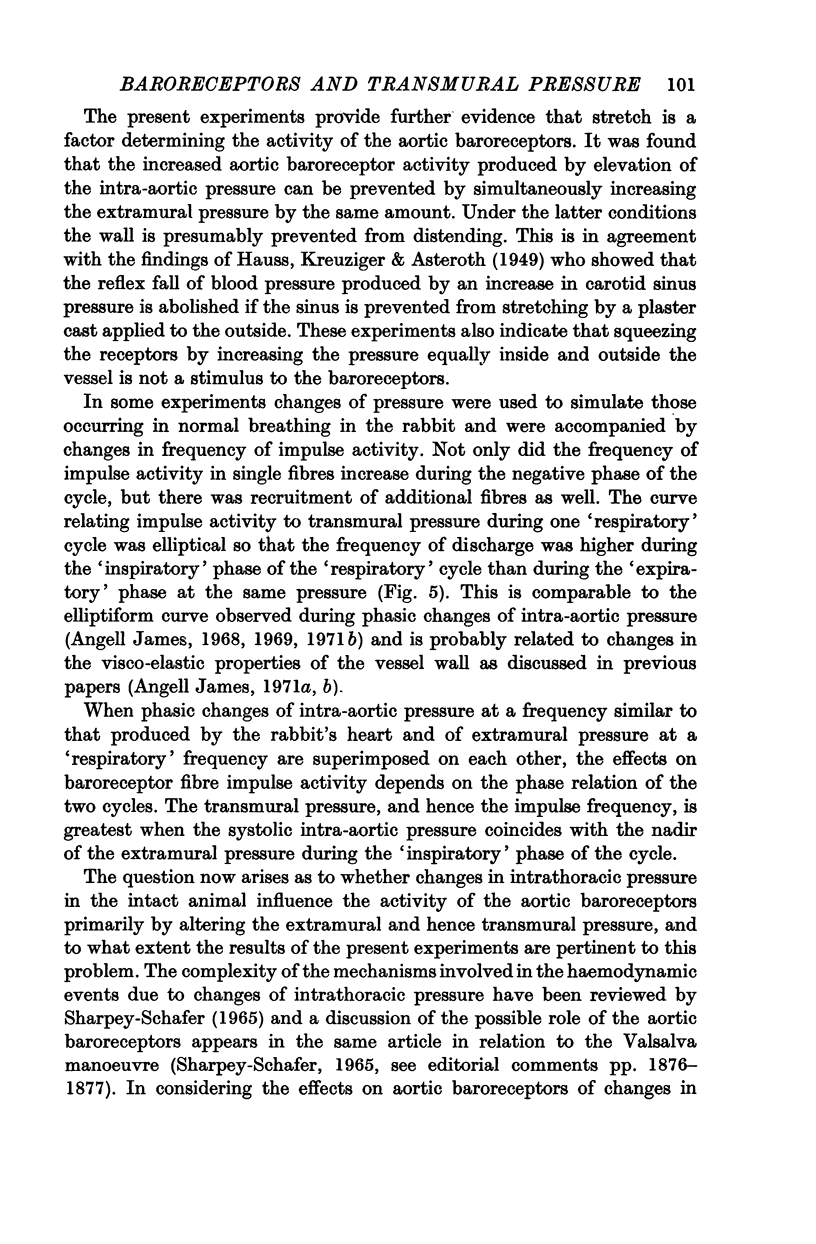

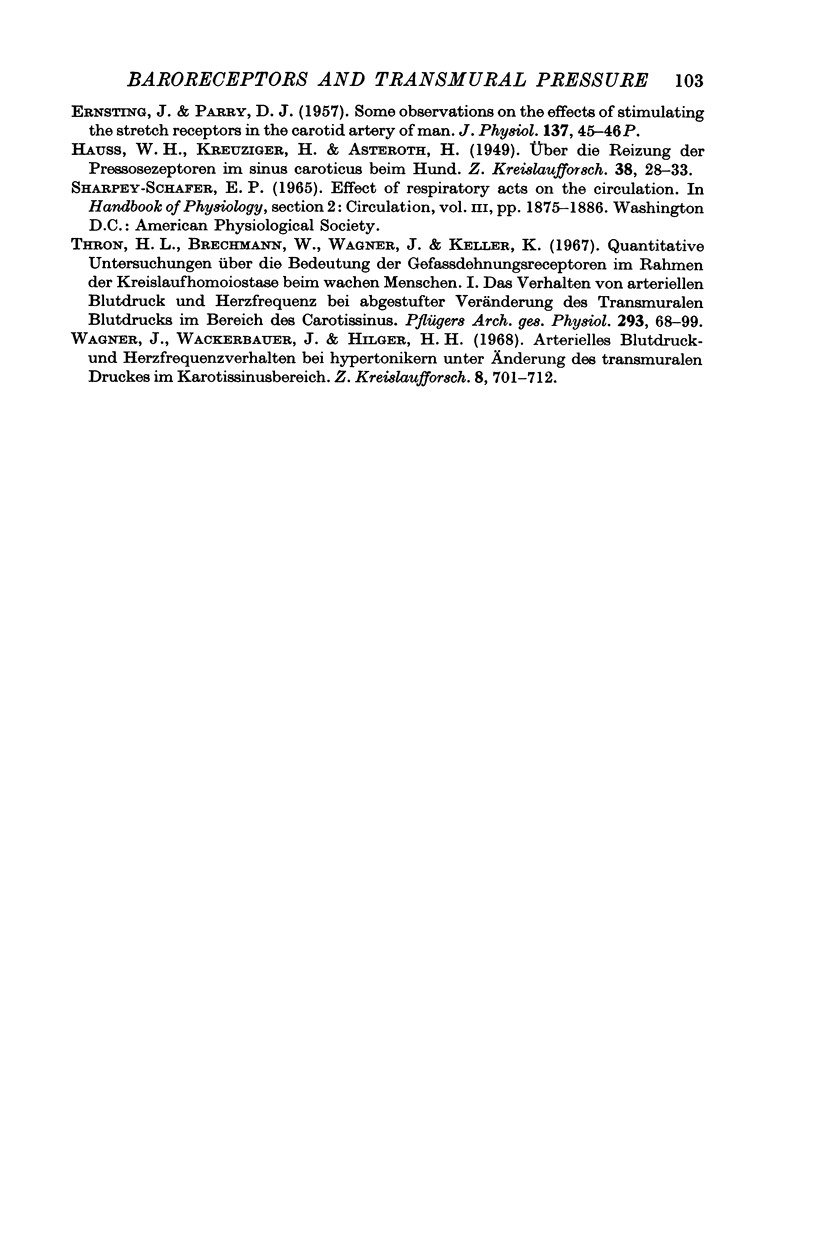
Images in this article
Selected References
These references are in PubMed. This may not be the complete list of references from this article.
- Angell James J. E. The effects of altering mean pressure, pulse pressure and pulse frequency on the impulse activity in baroreceptor fibres from the aortic arch and right subclavian artery in the rabbit. J Physiol. 1971 Apr;214(1):65–88. doi: 10.1113/jphysiol.1971.sp009419. [DOI] [PMC free article] [PubMed] [Google Scholar]
- Bevegård B. S., Shepherd J. T. Circulatory effects of stimulating the carotid arterial stretch receptors in man at rest and during exercise. J Clin Invest. 1966 Jan;45(1):132–142. doi: 10.1172/JCI105317. [DOI] [PMC free article] [PubMed] [Google Scholar]
- DE BURGH DALY M. A method for eliciting baroreceptor reflexes from the isolated carotid sinus. J Physiol. 1955 May 27;128(2):33–5P. [PubMed] [Google Scholar]
- Thron H. L., Brechmann W., Wagner J., Keller K. Quantitative Untersuchungen über die Bedeutung der Gefässdehnungsreceptoren im Rahmen der Kreislaufhomoiostase beim wachen Menschen. I. Das Verhalten von arteriellem Blutdruck und Herzfrequenz bei abgestufter Veränderung des transmuralen Blutdrucks im Bereich des Carotissinus. Pflugers Arch Gesamte Physiol Menschen Tiere. 1967;293(1):68–99. [PubMed] [Google Scholar]
- Wagner J., Wackerbauer J., Hilger H. H. Arterielles Blutdruck- und Herzfrequenzverhalten bei Hypertonikern unter Anderung des transmuralen Druckes im Karotissinusbereich. Z Kreislaufforsch. 1968 Aug;57(8):701–712. [PubMed] [Google Scholar]



